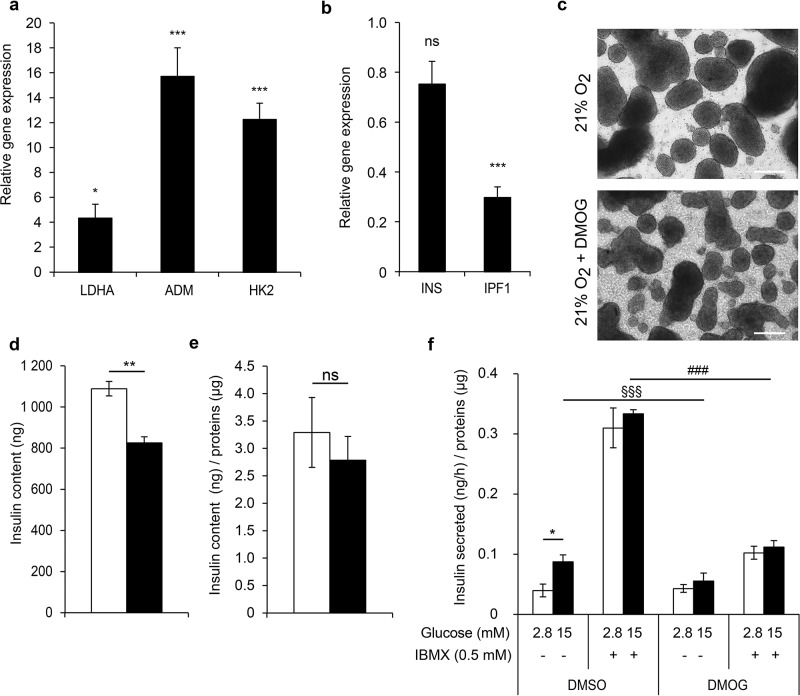Figure 7.
HIF1α stabilization affects insulin function in normoxic conditions. EndoC-βH3 PIs were cultured in normoxia and treated with dimethyloxalylglycine (DMOG) for 6 days. (a) Expression of HIF target genes in DMOG-treated PIs versus control PIs by qPCR. Each point represents the mean ± SEM of two independent experiments performed in duplicates. *p < 0.05, ***p < 0.001. (b) Insulin gene expression in DMOG-treated PIs versus control PIs by RT-qPCR. Each point represents the mean ± SEM of two independent experiments performed in duplicates. ***p < 0.001. (c) Morphological images of EndoC-βH3 PIs after a 6-day DMOG treatment. Scale bars: 300 μm. (d, e) Insulin content in EndoC-βH3 PIs treated with DMOG (black bars) versus untreated PIs (white bars). Data are expressed as insulin content in nanogram of insulin (d) and in nanogram of insulin normalized per microgram of proteins (e) ± SEM of four independent wells per condition assayed in duplicates by ELISA. **p < 0.01. (f) DMOG alters insulin secretion. Insulin secretion was stimulated for 60 min with 15 mM glucose in the presence or absence of IBMX on DMOG-treated (black bars) and nontreated (white bars) EndoC-βH3 PIs. GSIS data are expressed as nanogram of secreted insulin per hour per microgram of proteins ± SEM of four independent wells per condition assayed in duplicates by ELISA. *p < 0.05, §§§p < 0.001 PIs exposed to 15 mM glucose + DMOG when compared to 15 mM glucose alone, ###p < 0.001 PIs treated with DMOG and exposed to 15 mM glucose + IBMX when compared to controls.

